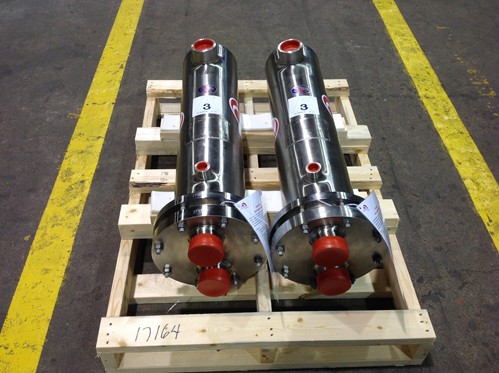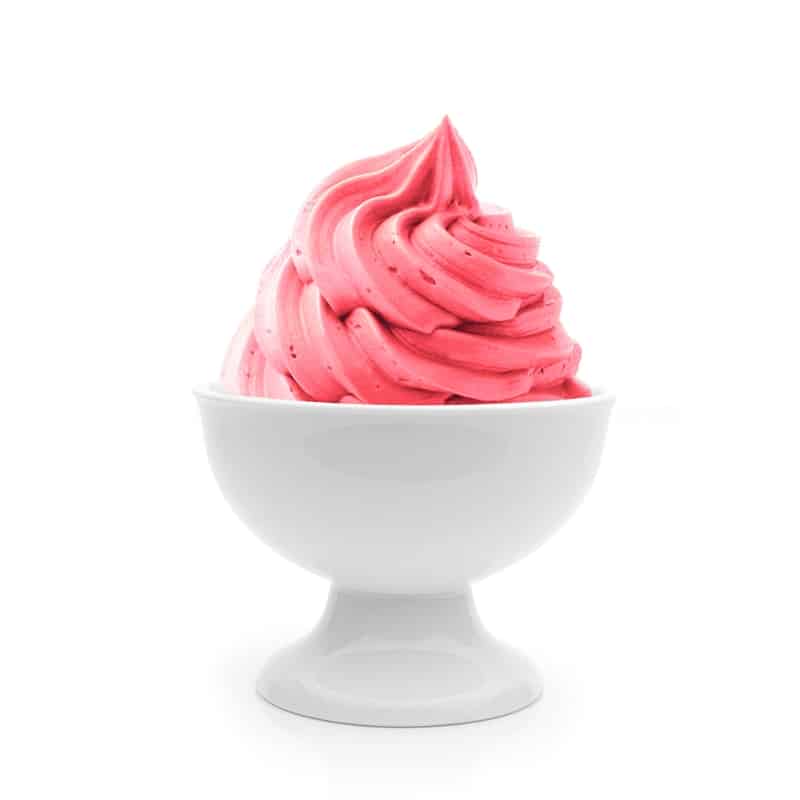
It’s important that frozen custard is pasteurized correctly
using the right sanitary shell and tube heat exchangers, before being distributed among frozen custard shops and sold to consumers.
Frozen custard is a sweet treat popular throughout the Midwest. It’s similar to ice cream, but in addition to the cream and the sugar, egg yolk is added to the concoction to create a creamier, richer texture and flavor. The U.S. Food and Drug Administration states that for a frozen dessert to be considered “frozen custard,” it must contain 1.4 percent egg yolk solidsby weight of the final product.
That minimum is flexible when bulky flavors are added, but once the percentage of egg yolk solids falls below 1.12, the dessert is no longer considered a frozen custard – though it’s still considered delicious by many consumers!
Safely making frozen custard
Of course, like any dairy product or food containing egg, it’s important that frozen custard is pasteurized correctly, using the right sanitary shell and tube heat exchangers, before being distributed among frozen custard shops and sold to consumers.
The FDA has set different requirements for the pasteurization of ice creams and custards than it has for regular milk. Since frozen custard contains higher fat content, milk solids and more sugar or sweetener, it’s a more viscous solution and must be pasteurized at a higher temperature and longer duration than milk. The presence of egg yolk also requires more robust pasteurization conditions.
Frozen custard should be pasteurized at 180 degrees Fahrenheit for 15 minutes, according to the Journal of Dairy Science.
After pasteurization, the mixture ishomogenized in a pressurized environmentof between 2,500 and 3,000 psi, Milk Facts explained. This reduces the size of milk fat globules, ensures all emulsifiers and other additions are evenly distributed and overall contributes to a smoother, creamier product.
Next, the mixture must age for at least four hours. Aging is done at 40 degrees Fahrenheit to prevent freezing while still keeping it at an acceptably low temperature. After aging, liquid flavors and colors may be added.
Finally, it’s time to freeze. For most frozen custards, though, this step is completed at the point of sale using machines that take in the liquid pasteurized product, pass it through a freezer that continuously mixes the liquid and dispense the product into a dish or cone.
Sanitary shell and tube heat exchangers for frozen custard production
To keep a dairy operation sanitary for continued use, it’s important to understand the specific risks of the products being pasteurized in certain equipment. According to research published in Comprehensive Reviews in Food Science and Food Safety, custard products commonly leave behind Bacillus cereus spores
spores.
If B. cereus is included in the final product a consumer could become ill, experiencing vomiting or diarrhea. For this reason, it’s critical that shell and tube heat exchangers are always kept clean to prevent fouling and contamination.
Standard cleaning-in-place systems were found to be effective in keeping equipment sanitary throughout their life time. The CIP process included a six-minute prerinse; a 10-minute NaOH rinse; a six-minute intermediate rinse; a 10-minute HNO3 rinse; and finally, a concluding rinse for six minutes.
To learn more about the sanitary shell and tube heat exchanger options available to you, reach out to the friendly engineers at Enerquip

